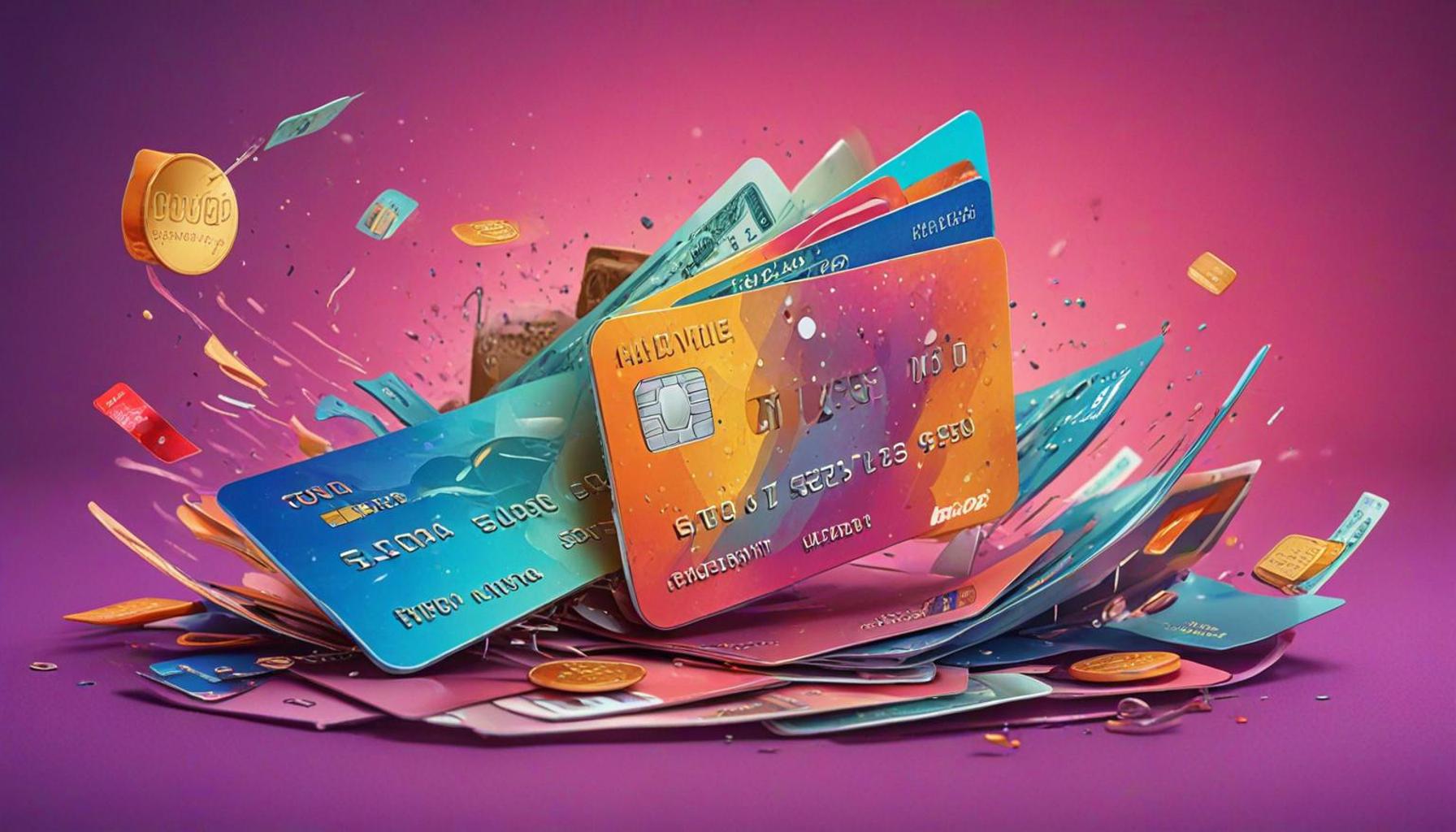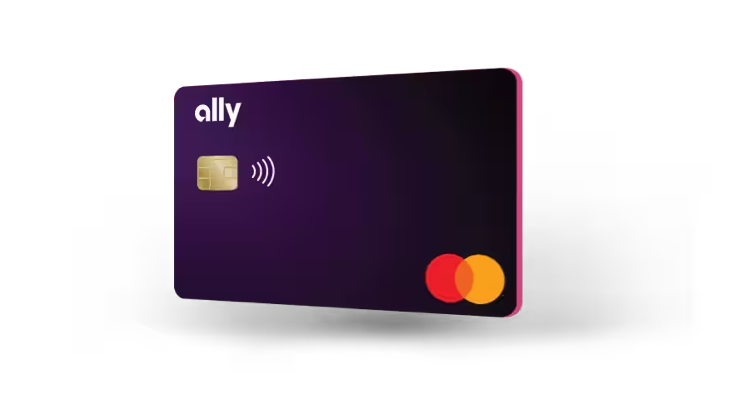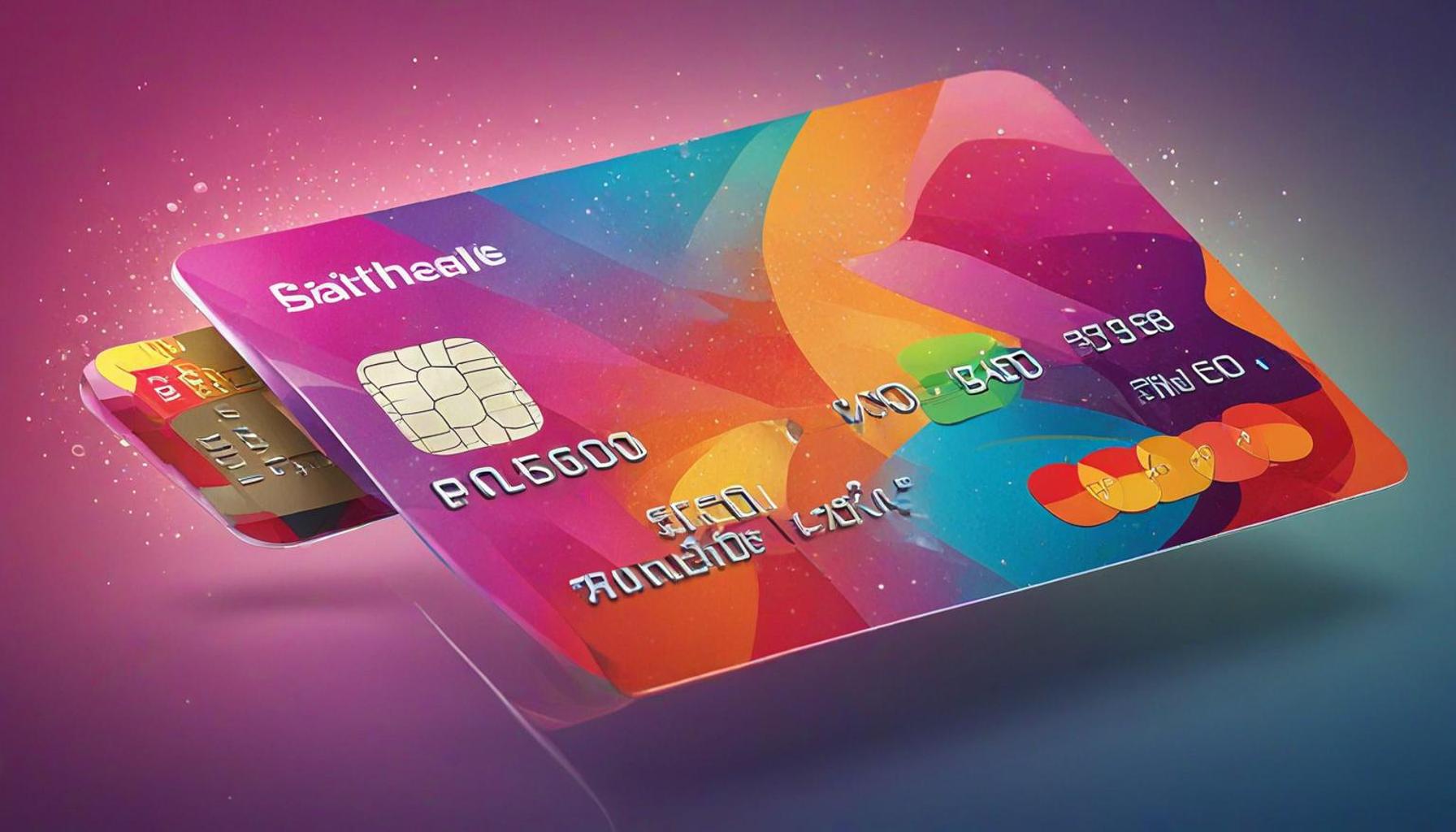The Impact of Credit Card Interest Rates on Financial Health

The Importance of Understanding Credit Card Interest Rates
Credit card interest rates can significantly affect your overall financial health. When using credit cards, it’s crucial to understand how these rates work and what they mean for your wallet. Knowing the ins and outs of credit card interest rates can empower you to make smarter financial decisions, ultimately leading to a healthier economic situation.
One of the main consequences of high interest rates is increased monthly payments. For example, if you carry a balance of $1,000 on a credit card with an interest rate of 20%, you would owe approximately $200 in interest over the course of a year. If you only make the minimum payment, which is often around 2-3% of your balance, the majority of your payment will go toward interest rather than paying down the principal. This results in higher monthly payments that can strain your budget.
Another effect is a longer debt repayment period. If you only pay the minimum amount each month, it could take years to pay off your balance, especially if you continue to add to it. Using the previous example, if you pay just $30 a month, it would take you over three years to pay off that initial $1,000, by which time you may have paid several hundred dollars in interest.
The repercussions extend beyond just financial strain; they can also have a negative impact on your credit score. Credit scores are calculated based on various factors, one of which is your credit utilization ratio—the amount of credit you’re using compared to your total available credit. If you’re carrying a high balance due to accruing interest, it can lead to a lower credit score. A lower credit score can affect your ability to secure loans, rent an apartment, or even get certain jobs.
Understanding how credit card interest rates affect your finances is essential for making informed spending decisions. Smart management of these rates can lead to better financial outcomes. For instance, if you’re aware of your credit card’s interest rate, you might choose to pay more than the minimum payment each month or consider transferring your balance to a card with a lower interest rate or promotional offers.
In the United States, where credit card use is widespread, being mindful of your interest rates can help you maintain a healthier financial life. Choosing the right credit card and understanding your financial habits are keys to avoiding pitfalls. Look for cards with rewards or cashback options but also pay attention to their APR (Annual Percentage Rate). By being proactive and choosing cards that suit your financial habits, you can avoid falling into the trap of high-interest debt.
DISCOVER MORE: Click here to learn about the pros and cons
The Hidden Costs of Credit Card Interest Rates
Understanding credit card interest rates is vital for maintaining your financial health. The impact of high interest rates can sneak up on many consumers, leading to unanticipated costs that can derail financial plans. One of the first things to grasp is how these rates are calculated. Typically expressed as the Annual Percentage Rate (APR), this figure represents the yearly cost of borrowing on your credit card and can vary significantly from one card to another. For instance, while some cards may offer an APR as low as 12%, others can charge upwards of 25% or more. This discrepancy can make a substantial difference in your overall debt repayment.
To demonstrate the impact of varying interest rates, consider the following examples:
- If you had a balance of $2,000 on a card with a 12% APR, your annual interest would be approximately $240.
- Conversely, if that balance was on a card with a 25% APR, you would accumulate around $500 in interest over the same period.
This difference of $260 might not be immediately apparent, but over time, it compounds, resulting in a heavier financial burden. Thus, understanding your credit card’s APR allows you to anticipate and, ideally, mitigate these costs.
Another aspect to consider is how interest rates can influence your spending behavior. High interest rates can create a mental barrier, making you more cautious with your spending. Many individuals feel reluctant to use a credit card with a high APR, fearing the financial consequences of carrying a balance. However, this can lead to missed opportunities where using credit could be beneficial, such as taking advantage of rewards programs or promotional financing when making larger purchases.
Moreover, the temptation to rely on credit for everyday expenses can sometimes result in accumulating debt faster than anticipated. For example, if you use your credit card for groceries, gas, and other necessities, and you’re faced with high-interest charges, your current purchases can quickly evolve into a significant debt burden that requires years to pay off. To avoid such scenarios, it’s essential to consider the following strategies:
- Pay off the balance in full each month: This helps you avoid interest altogether and keeps your spending in check.
- Set a budget: Creating a realistic monthly budget that encompasses your credit card use can help safeguard against overspending.
- Choose the right card: Look for cards with low interest rates or promotional offers that fit your spending habits.
In conclusion, navigating the complexities of credit card interest rates can be challenging, but it’s essential for maintaining your financial well-being. By keeping a close eye on your expenditures, understanding the implications of interest rates, and utilizing effective strategies, you can minimize the adverse effects of credit card debt on your financial health.
DISCOVER MORE: Click here to learn about the pros and cons
The Long-Term Effects of High Credit Card Interest Rates
The long-term consequences of high credit card interest rates can be daunting and often go unnoticed until it’s too late. When a consumer consistently carries a balance, the increasing debt can lead to a vicious cycle that hampers financial stability. Interest on unpaid balances is compounded, meaning that not only do you pay interest on the principal amount borrowed, but you also pay interest on the interest itself. This dynamic can rapidly escalate a manageable debt into a substantial burden.
For instance, if you maintain a balance of $1,000 on a credit card with a 20% APR and only make the minimum payments—often around 2% of your balance or a fixed amount—you may end up taking several years to pay off the debt fully. In fact, using a credit card calculator, it could take roughly 5 years to pay off that $1,000 balance, costing you over $500 in interest during that time period! These extra costs can detract from your overall savings and limit your ability to invest in essential areas, such as retirement or emergencies.
In addition to the financial burden, high credit card interest rates can also have a significant psychological impact. Carrying substantial credit card debt can lead to feelings of stress, anxiety, and insecurity. Many consumers may become preoccupied with their debt, which can impair decision-making in both professional and personal realms. Consequently, managing credit wisely isn’t merely a mathematical challenge; it also has emotional and mental health dimensions.
The Role of Credit Utilization Ratio
Another critical concept to be aware of is the credit utilization ratio, which refers to the percentage of your total available credit that you are currently using. It’s recommended to maintain a ratio below 30% to promote a healthy credit score. However, high-interest credit cards often lead to consumers maxing out their cards, which can skyrocket this ratio. For example, if you have a credit limit of $5,000 and your balance reaches $4,500 due to high-interest charges, your ratio is 90%, which could significantly impact your credit score. A lower credit score can further limit your future borrowing options and lead to higher interest rates on new loans.
Exploring Alternatives
When faced with high credit card interest rates, exploring alternatives can offer some relief. Here are a few options:
- Balance transfer cards: Some credit cards offer introductory 0% APR on balance transfers for up to 18 months. Transferring high-interest balances to these cards could provide significant savings.
- Personal loans: For those burdened with high-interest credit card debt, consolidating that debt into a personal loan with a lower interest rate can be advantageous.
- Credit counseling services: These non-profit organizations can assist in developing a budget, negotiating lower interest rates, and crafting a manageable debt repayment plan.
All these alternatives, while not void of risks, can aid in regaining control over financial health and reducing the pressure that high-interest rates impose on consumers. Overall, being proactive in addressing high credit card interest rates may pave the way for a more secure financial future.
DISCOVER MORE: Click here to learn about the pros and cons
Conclusion
Understanding the impact of credit card interest rates on financial health is vital for consumers seeking to maintain control over their finances. High interest rates can lead to a cycle of debt that not only strains your wallet but also your mental well-being. For instance, if you carry a balance of $5,000 on a credit card with a 20% annual interest rate, you could potentially pay over $1,000 in interest charges over the course of a year if you only make minimum payments. This can create an ongoing burden that prevents you from saving for essential goals, such as buying a home or funding your child’s education. The long-term repercussions include escalating debt burdens, reduced savings for important financial objectives, and adverse effects on your credit score due to high credit utilization ratios, which can hinder your ability to secure loans or mortgages in the future.
As we’ve examined, these elements can create a challenging financial landscape, emphasizing the need for vigilance in credit management. Recognizing your rates and the total cost of credit is essential in avoiding unnecessary financial strain. Implementing a budget can help you track spending against your income, allowing you to allocate more funds toward debt repayment.
Nevertheless, by recognizing the alternatives available—like balance transfer cards, personal loans, and credit counseling services—individuals can take proactive steps toward overcoming the burdens posed by high interest rates. For example, a balance transfer card may offer an introductory 0% interest rate for a specified period, allowing consumers to pay off their existing debt more quickly without accruing additional interest. Similarly, personal loans can provide a fixed interest rate, potentially at a lower cost than a credit card. These strategies empower consumers by providing them an opportunity to regain financial stability and peace of mind.
Ultimately, the path to a healthier financial future lies in informed decision-making and an awareness of the consequences that interest rates can have on overall financial health. By approaching credit with care and exploring available resources, such as local credit unions or non-profit financial advisors, consumers can mitigate the potential harm of high interest rates, paving the way for a balanced and secure financial life.


